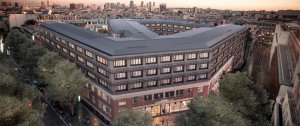From bacteria to collective motion in heterogeneous media
First part - I will show some recent experimental results with three mutants of the gliding bacterium Myxococcus xanthus. We found that mutants lacking biochemical signaling and moving unidirectionally exhibit collective motion in the form of large moving clusters at intermediate densities, while self-organize into vortices at very high densities. Our measurements indicate that there is a critical density at which arbitrary large clusters and giant number fluctuations are observed. These findings are consistent with what is known from self-propelled rod models which strongly suggests that the combined effect of self-propulsion and volume exclusion interactions is the pattern formation mechanism leading to the observed phenomena. On the other hand, if mutants reverse periodically their moving direction — as the wild-type does — the emerging macroscopic patterns are remarkably different, particularly at high density where the bacteria self-organize into a mesh-like structure.
Second part - Most bacteria do not leave in clean and homogeneous media, but rather in highly heterogeneous environments. Despite of this evident fact, little is known about collective motion on heterogeneous media and most, if not all, theoretical efforts have focused on homogeneous media. In the second part of the talk, I will show through a simple model that due to the presence of few heterogeneities the transition to collective motion is radically different from what we know from homogeneous media. For instance, our “homogeneous-based” intuition tells us that low noise intensities should favor collective motion. However, we found that in heterogeneous media this is no longer true. There is a optimal noise amplitude that maximizes collective motion. Counterintuitively, at vanishing noise intensities the system becomes disordered again. These results may shed light on bacterial adaptation and evolution, particularly concerning the bacterial tumbling rate.
Séminaire du laboratoire Gulliver








